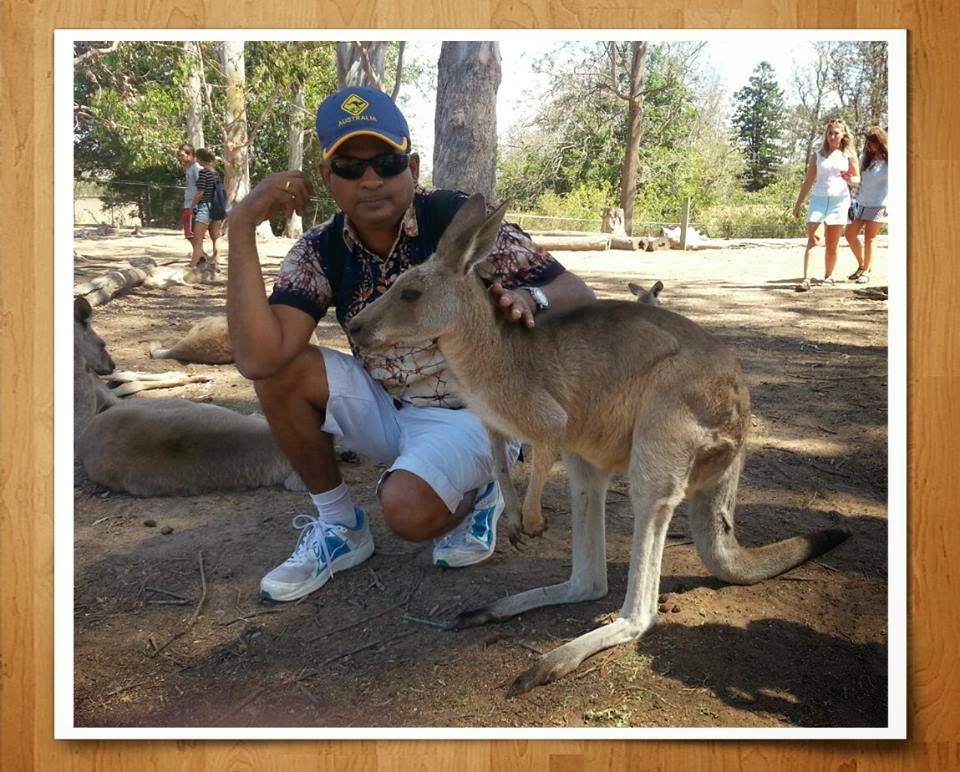(Brisbane is the most talked about city this weekend, as who’s who of the world leaders, including Prime Minister of India, Narendra Modi, have descended there. Even as the Queensland Capital makes best efforts to put up a good show under sweltering heat, B Narayanan takes a sneak peak of the city and says Brisbane is every bit as irreverent and laidback as Aussies are reputed to be. Our vegetarian writer also tells us why it is a good idea to eat Kangaroo, when you are down under. The 10 minute short video below by Brisbanestreets, takes you through the top attractions of the city - Ed )
Chasing ‘Roos' Across Brisbane
by B Narayanan
I was in Brisbane
last week, downing chilled pitchers of the lovely golden ale, Victoria Bitter,
and enjoying the pleasant Aussie Spring. Across the city, “Colour Me Brisbane”,
a multi-color lighting installation, ahead of the G-20 was on : the city’s
famous Story Bridge was lighted up, and so were public buildings. Also to be
seen were posters warning citizens of the diversions to expect when G-20
starts, and articles in the newspapers,
typically irreverent, on why the G-20 was a waste of time and money.
Indeed, Brisbane
is every bit as irreverent and laidback as Aussies are reputed to be : cyclists
zigzag across the paths, and diners can be seen having long, elaborate
breakfast at sidewalk cafes on weekdays. Shops close by 7 pm, and the inland
“sea”, a big public pool, draws in hundreds of swimmers everyday.
The funeral for
one of Australia’s greatest, and most controversial Prime Ministers, Gough
Whitlam was on TV, and the Australians were proud that he had thrown Australia
open to people of all races, and returned land to the Aborigines. Australia
today is making a determined effort to build a multiracial society, and to
encourage people to settle in their country. The streets were empty on
Melbourne Cup day, which reminded me of a “bandh” in India . Two of the horses
which participated in the races died, but most Australians did not see any
cruelty in whipping horses to death.
On the streets of
Brisbane, I came across a sad old man, playing accordion : people went their
way, and only a few coins had accumulated in his hat.
I went to the Lone
Pine Koala Sanctuary on the outskirts of Brisbane, and saw Kangaroos lazing
away and Koalas dozing. There was a notice in the cafeteria, explaining how
Australia had a Kangaroo overpopulation problem, and how they had to be
“culled” to make Roo Steaks…
<><><>
#
B Narayanan, based in New Delhi, is a member of the Indian Information Service
and a freelance writer.
#
Brisbanestreets is a YouTube video channel showcasing various facets of
Brisbane city and Queensland.




